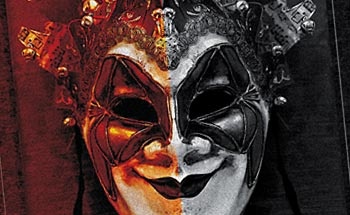FAÇADE - Comédie d’images
Victoria Theatre, Devonport, Auckland
10/03/2007 - 18/03/2007
Production Details
DIRECTED BY David Fotter
COSTUMES BY Trelise Cooper
FAÇADE PRODUCTIONS LIMITED
BY ARRANGEMENT WITH Oxford University Press and Hal Leonard
Squeeze your wildest dreams out like lemon juice, close your eyes and drink – you will taste something similar to this.
Façade – Comédie d’Images is based on the poems of 1920s aristocrat, eccentric and poet, Edith Sitwell. Her fascination with the musical quality of words led to her renowned work, Façade, being set to music by popular dance-band arranger of the day, William Walton.
This groundbreaking score brought him notoriety as an avant-garde modernist!
Austrian director David Fotter peels back the layers of this risqué observation of human sensibilities. Façade unfolds slices of life portrayed through live music, theatre, dance, pantomime, cabaret and cutting-edge technology, all packed in an audio-visual masterpiece.
A show of approximately 3600 seconds of fun, elegance, humour, brilliance, sex, passion, fashion and all the rest. Façade is a head-rush!
When:
Sat 10 to Sun 18 March
Sun to Tues, 7pm
Wed to Sat, 8pm
Where:
Victoria Theatre
Devonport
Price:
Adult $40
Friend $35
Group 6+ $35
Concession $30
Duration:
1 hour, no interval
Bookings:
iTICKET
Ph (09) 361 1000 or www.iticket.co.nz
Tickets on sale to be confirmed
Restricted to people 18 years and over
Theatre ,
1 hr, no interval
ARTHOUSE CULTURE-CUM-BAWDY BOUDOIR FOLLIES
Review by Nik Smythe 14th Mar 2007
According to the programme, "Façade was originally an attempt to uncover [a] certain musical quality of words by means of their rhythmical construction." This fact adds weight to the production’s major shortcoming: you just can’t hear the words. Being the poetic word-plays that they are, they’re a bit of work on the written page too, given that the lyrics are provided in the programme in small type. But if we could at least make out the words as sung, they would stand a much better chance of getting reconciled with the manic on-stage action.*
After some frustration trying to follow the songs, only to find it drowned out by the band and enunciated with less than the crispness required to let such rapid-fire olden-style verse be comprehended, I gave in and just let the many other media elements entertain me – films and visual projections on the large muslin back curtain, technical props such as an on-stage swing, twisted music and some fairly decent lighting as designed by Chris McKenzie and operated by Claire O’Connell.
I enjoyed parts I (think I) understood – the wee shadow-play of two ladies duelling, the recognisable attributes of young folk in love in various tales of courtship and desire (and often humiliation), and some of the accompanying visuals, such as a delightful lesbian art-film, shot by Meg Perrot. The direction of David Fotter and the acting company’s commitment to this work is clear, and with some acoustic improvements it could well become more accessible. The question then is whether this dated form of comedy will ever be more than a novelty to the populace at large, not that novelties have never been widely commended or lucrative.
Trelise Cooper’s costume design, a box-office draw card for the piece I’m sure, ranged from the sublime – witness actresses Lucy Fletcher and Lydia Tawse’s various gowns, most appealing although sometimes their visible underwear was conspicuously modern; to the classy – actor Ashley Hawkes’ black cummerbund suit; to the absurd – the song reciters’ unflattering ringleader slash clown outfits; to the downright ugly uniform worn by the band. Yet again it’s hard to establish how much the clashing elements are intentional, as opposed to circumstantial.
Altogether, there’s a rich pastiche of ideas and expressions going on here which somehow don’t wholly gel. Everything about this show lends itself to an olden day travelling sideshow sort of atmosphere. In fact, it really comes across as a classic example of what entertainment was like before mass-communication. If vaudeville can be considered the mainstream, Façade sits uneasily somewhere between arthouse culture and bawdy boudoir follies.
*I think it’s useful to note I was seated near the band, stage right, and that anyone wanting a better chance of hearing the lyrics should try getting seats stage left, i.e. the right-hand side of the auditorium.
Copyright © in the review belongs to the reviewer







Comments